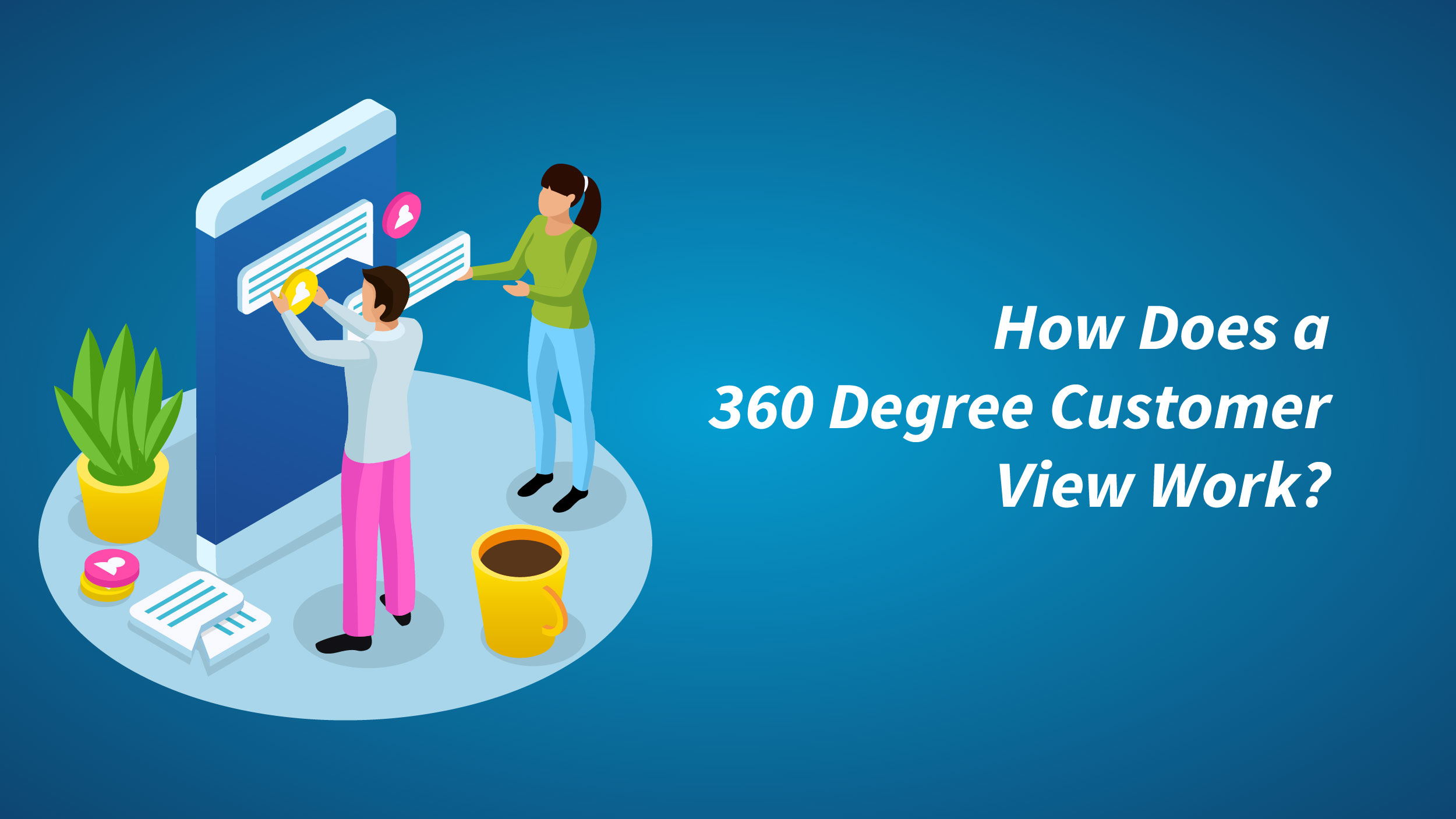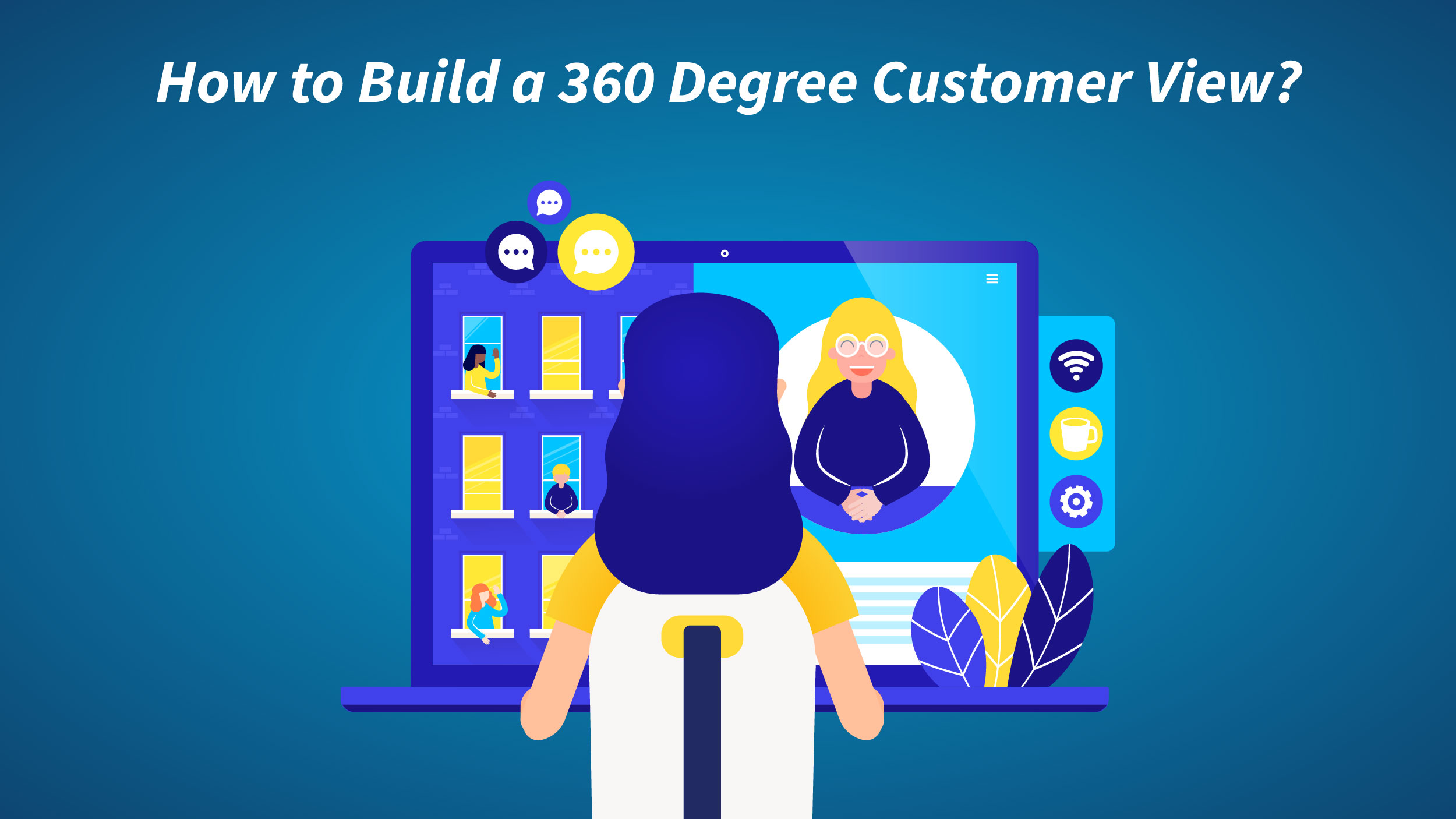In today’s world, delivering exceptional customer service stands as the paramount factor for any company aspiring to boost its revenue. Knowing customer demands is the first step to understanding what they do, and how they feel about particular products and services. This brings us to the next question: how can you determine exactly what customers desire?
The solution lies in adopting a 360 degree customer view. It allows greater awareness and modifies customer experiences accordingly, positioning your business for long-term success. Before deciding where you’ll focus, it’s imperative to collect as many customer viewpoints as you can. This blog discusses everything you need to know about 360-degree customer view.
What is 360 degree Customer View?
A 360-degree customer perspective encompasses an all-encompassing and thorough perception of a customer by consolidating data from diverse touchpoints and systems into a unified platform. This assists in obtaining an in-depth and precise persona of your customer and their expectations.
Below are some statistics to prove why businesses must integrate the customer view approach.
According to recent studies, nearly 8 out of 10 consumers have decided against a purchase or abandoned a transaction due to a disappointing service experience.
An overwhelming 93% of customers are inclined to make repeat purchases with companies that deliver outstanding customer service. Furthermore, even after a mistake, 78% of consumers express a willingness to do business again if the company’s customer service is excellent. It’s noteworthy that almost three out of five consumers emphasize the significance of good customer service in fostering brand loyalty.
How Does a 360 Degree Customer View Work?
 Although intricate, each component of a 360 degree customer view is vital for any business operations. Let’s look at how it works.
Although intricate, each component of a 360 degree customer view is vital for any business operations. Let’s look at how it works.
- Data Collection: Event collection, clickstream data, and general data from SaaS applications are just a few of the sources that are included in data collection. Since each of these sources offers a distinct viewpoint, understanding their differences is essential. The collection of data helps gain deeper knowledge of the customer, whether it is through clickstream analysis of user behavior or the integration of data from various apps.
- Data Warehouse: A data warehouse serves as a centralized repository where data from different platforms and systems can be aligned and stored. This consolidation allows for easier access and analysis of the data.
- Data Preparation: Data preparation stands as a vital phase in constructing a comprehensive customer profile. This process entails re-organizing and formatting data to make it analytically appropriate. Activities encompass table planning, data alignment, and validation of data format for analytical utility. Furthermore, data experts prioritize data scrubbing to enhance data integrity by pinpointing and rectifying errors or discrepancies.
- Identity Resolution: It is a key component that focuses on creating an identity graph by linking user actions from different touch points. Each customer’s interactions and preferences are represented in a 360 degree customer view.
Also Read: How Do Business Cloud Services Impact Scalability and Growth?
Benefits of 360 Degree Customer View
Below are the numerous advantages offered by a comprehensive 360-degree customer view:
- Manage Conversations across Channels: No matter which channel they use, your customers expect the same quality of service. Offering omnichannel support, or a unified and consistent level of service across all modes of communication, is one way to ensure superior customer experience.
- Ensures Access to Customer Information: Your customer data must be available to your support agents in real-time. When a customer returns a product or when their warranty expires, your team can easily access the data they’re looking for with this approach.
- Better Predictive Analytics: Using information from past actions, a 360 degree customer view forecasts what your customers will probably do next. You can better predict customer needs and provide customized purchases if you have an in-depth grasp of your customers’ past and regular interactions. Consequently, this puts businesses in a stronger position to take advantage of cross-selling or up-selling.
How to Build a 360 Degree Customer View?
 Now that you know how 360 degree customer view can benefit your organization, it’s time to create your own. Take the following actions to create a comprehensive picture of your customers.
Now that you know how 360 degree customer view can benefit your organization, it’s time to create your own. Take the following actions to create a comprehensive picture of your customers.
Establish a single source of truth
Create a single customer data platform that will streamline the process for all employees in the company to gather, store, and distribute customer data. Ensure that the location you choose for data storage allows teams throughout the company to access and add details to customer profiles as needed.
Identify customer data relevant to your goals
Knowing the kinds of data that allow you to create thrilling experiences is a necessity to offer superior client service. If you’re not sure where to begin, start by putting the following things together:
- Basic information such as names, phone numbers, addresses, and email addresses.
- In addition to demographic information like age, gender, and schooling, geographic identifiers can be as general as the nation or state or as hyper-specific as the zip code.
- Transaction history, which includes the total amount spent as well as prior purchases made through all accessible channels.
- Direct communication and previous interactions, including emails help desk, and support tickets.
Enrich your existing customer data
There’s a good chance that some of the customer data you currently have is outdated, unnecessary, or incomplete. Conducting further customer research is an excellent method to gather more data. You can do this by:
- Social listening: Keep an eye out on social media for mentions, reviews, and opinions of your brand to gain insight into how customers interact with and talk about it.
- Third-party data: You can add data from third parties to fill in any gaps that remain after you examine all of your data. Many sources, like market research studies, government records, and non-competitive sources of customer intelligence, are used to gather this data.
- Customer feedback: Direct customer communication is one of the best ways to obtain current data. Understanding the customer perception of your brand can help you design your operations to better address consumer needs. To gather data, carry out polls, customer surveys, and phone or video conversations.
To Sum It Up
360 degree customer view aids in boosting customer knowledge, retention, and intelligence. By tapping into insights into consumer behavior, predictive analytics, and enhanced customer intelligence, companies can elevate their productivity across various platforms and achieve more favorable outcomes in their advertising endeavors. Every interaction with a customer, no matter how brief, is meticulously documented, creating a welcoming atmosphere that cultivates loyal customers.


Comments are closed.